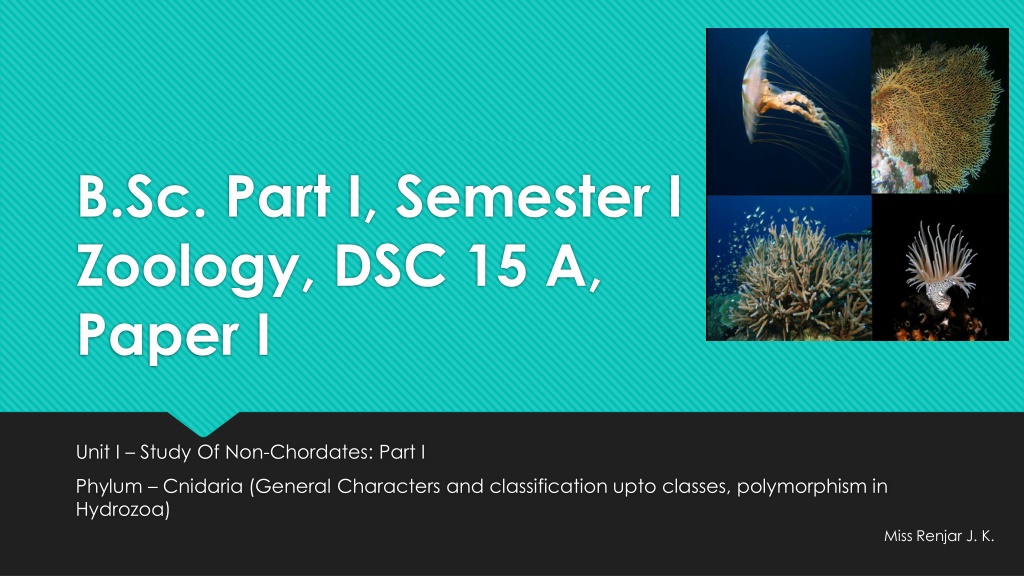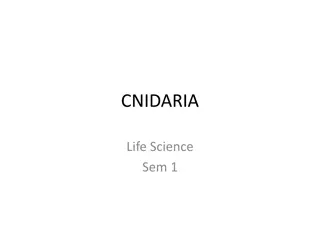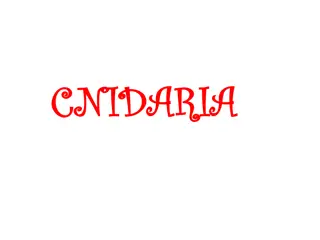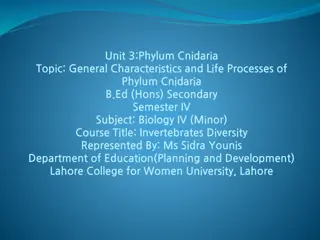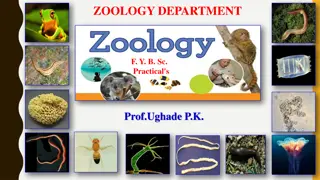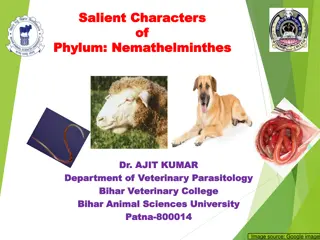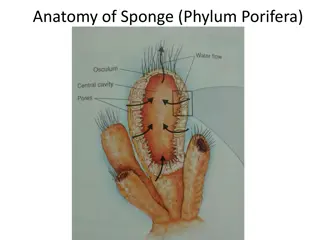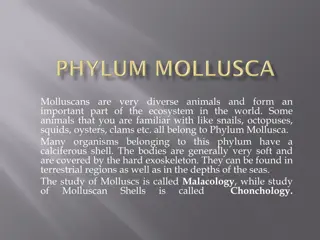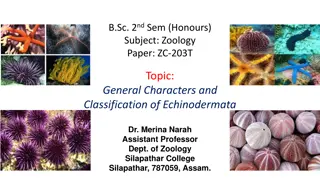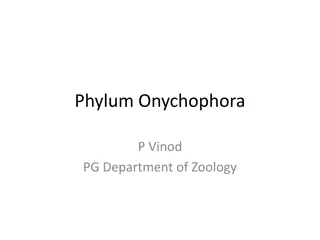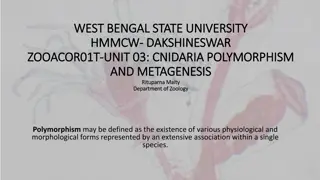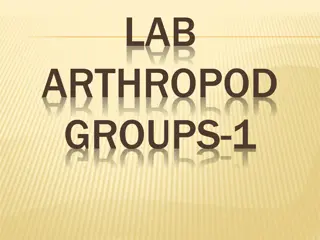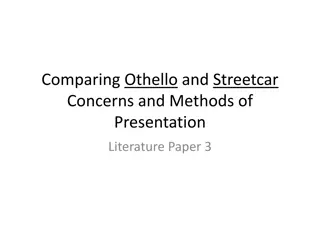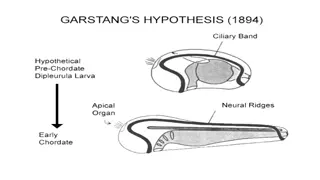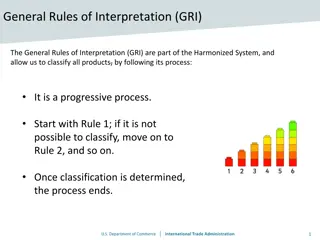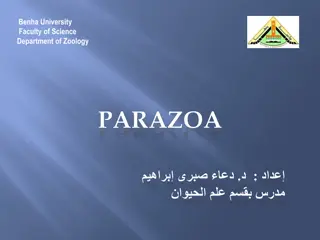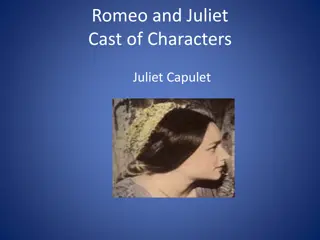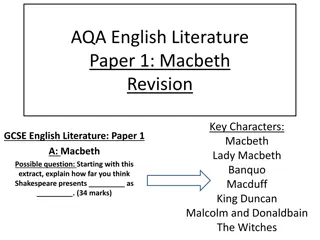Study of Phylum Cnidaria: General Characters and Classification
Phylum Cnidaria comprises aquatic organisms with specialized stinging cells known as cnidoblasts. They exhibit radial symmetry and are triploblastic, with distinct polyp and medusa forms. The phylum includes classes like Hydrozoa, Scyphozoa, and Anthozoa, each displaying unique characteristics and modes of reproduction. Hydrozoa, for example, is primarily colonial and marine, showing polymorphism in species like Obelia and Hydra. Polymorphism in Hydrozoa involves different structures and functions among individuals within a colony.
Download Presentation

Please find below an Image/Link to download the presentation.
The content on the website is provided AS IS for your information and personal use only. It may not be sold, licensed, or shared on other websites without obtaining consent from the author. Download presentation by click this link. If you encounter any issues during the download, it is possible that the publisher has removed the file from their server.
E N D
Presentation Transcript
B.Sc. Part I, Semester I Zoology, DSC 15 A, Paper I Unit I Study Of Non-Chordates: Part I Phylum Cnidaria (General Characters and classification upto classes, polymorphism in Hydrozoa) Miss Renjar J. K.
General characters This phylum includes organisms, which possess specialised stinging cells called cnidoblasts. Animals are strictly aquatic, some are freshwater while some are marine. The animals may be either solitary or colonial and sedentary or free swimming, and possess a cavity called coelenteron. The animals are triploblastic and have generally non-cellular mesoglea. The animals are radially symmetrical. These animals are found in two different forms. One is the cylindrical, sedentary from called polyp and the other is free swimming, umbrella like form Called medusa Reproduction is asexual as well as sexual. Phylum Cnidaria has been divided into following classes.
(A) Class - Hydrozoa These are mostly marine and colonial, few are freshwater and solitary Between ectoderm and endoderm, there is a presence of a non-cellular mesoglea. Colonial forms like, Obelia, Physalia, Halistemma etc. Shows polymorphism. Examples; Obelia, Physalia, Hydra, Halistemma
(B) Class - Scyphozoa Animals are strictly marine and solitary. These are free swimming; the medusoid phase is prominent. Mesoglea is thick and it contain cells. Examples : Jelly fish, Pelagia etc.
(C) Class - Hydrozoa Animals are solitary or colonial. These are strictly marine and are fixed to the substratum. These are polyps only. The medusoid stage is absent. Mesoglea contains cells as well as fibers. Examples : Sea anemone, Tubipora
Polymorphism in Hydrozoa Polymorphism can be defined as a phenomenon, when an organism is a colony of more- than two types of individuals or zooids, which are different in structure and perform diverse functions in a coordinated manner. In Cnidarians, in general have two basic morphological types of individuals,. These individuals called zooids. One zooid is called polyp while other zooid is called medusa .
